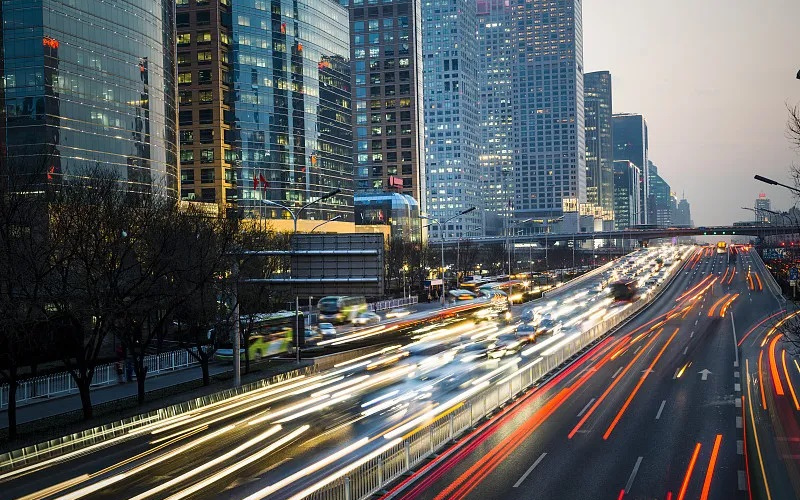Traffic Flow Sensors: The Intelligent Heart of Modern Transportation Systems

Real-time traffic data has become the lifeblood of efficient urban mobility, and at the core of this revolution lies a critical device: the traffic flow sensor. As cities worldwide grapple with escalating congestion costs—projected to reach $4.2 trillion globally by 2030—these sensors provide the precision intelligence needed to optimize traffic movement, reduce emissions, and create smarter transportation networks.
1. Cutting-Edge Traffic Sensing Technologies Compared
Radar-Based Sensors: The All-Weather Performers
Microwave traffic flow sensors utilize active scanning array radar technology to deliver unparalleled reliability in diverse conditions. Unlike camera-based systems that struggle with fog or darkness, radar sensors:
-
Maintain ≥95% detection accuracy for vehicle count, speed, and occupancy metrics even during heavy rain, snow, or sandstorms
-
Simultaneously track 128 individual targets across 8 lanes and 200+ meter ranges
-
Generate comprehensive data including instantaneous coordinates, movement direction, queue length, and vehicle classification
-
Operate at extreme temperatures (-40°C to +70°C) with near-zero maintenance needs
These attributes make radar-based traffic flow sensors ideal for signal priority systems and adaptive traffic control where uninterrupted operation is non-negotiable.
Video Detection: The Visionary Analysts
Video traffic sensors apply advanced image processing algorithms to convert pixel data into actionable insights:
-
Achieve 99% daytime and 98% nighttime accuracy through specialized headlight modeling and shadow compensation
-
Capture vehicle color, make, and license plates for enforcement applications
-
Create “virtual detection zones” adjustable via software without road modifications
-
Integrate automatic incident detection for stalled vehicles or wrong-way drivers
However, performance degrades significantly in fog, snow glare, or extreme darkness—limitations radar technologies overcome.
LiDAR Sensors: The Precision Specialists
Single-point LiDAR solutions like those deployed by BeiXing offer:
-
>99% accuracy in vehicle counting and classification
-
Immunity to wireless interference (3G/4G/WiFi) critical near communication hubs
-
Non-contact installation avoiding road cuts and minimizing maintenance
-
High-speed tracking capable of monitoring vehicles traveling 150 km/h+
LiDAR excels in tunnel environments and high-speed corridors where precision is paramount.
Comparison of Key Traffic Flow Sensor Technologies:
| Technology | Accuracy | Environmental Resilience | Key Strengths |
|---|---|---|---|
| Radar | ≥95% | Excellent (all weather) | Long range (250m), multi-target tracking, minimal maintenance |
| Video | 98-99% | Limited (light/weather dependent) | Rich visual data, flexible virtual zones, license plate recognition |
| LiDAR | >99% | Good (fog/rain resistant) | Immunity to EM interference, high-speed tracking, pinpoint accuracy |
2. Core Technical Capabilities Defining Modern Sensors
Multi-Parameter Detection Ecosystem
Next-generation traffic flow sensors transform raw movement into multidimensional intelligence:
-
Volume & Speed Metrics: Real-time counts and velocity measurements with <5% error margins
-
Space Utilization Analytics: Lane occupancy rates, headway times, and gap identification
-
Queue Intelligence: Precise measurement of queue lengths and durations at signals or bottlenecks
-
Anomaly Detection: Automatic alerts for stopped vehicles, pedestrian incursions, or wrong-way movements
Seamless Connectivity Frameworks
Modern sensors integrate via multiple communication protocols to feed data into traffic ecosystems:
-
Direct Signal Control: RS485 links to intersection controllers for real-time phase adjustments
-
Network Integration: RJ45 connections transmitting data to central traffic management platforms
-
Wireless Options: 4G/5G modules enabling rapid deployment without trenching
-
Edge Processing: On-device analytics reducing bandwidth needs by filtering raw video/radar feeds
3. Transformative Applications Reshaping Urban Mobility
Adaptive Signal Control Systems
In Luoyang’s Wangcheng Avenue, Haikang’s radar sensors reduced peak congestion by 32% through:
-
Dynamic ramp metering: Traffic lights at on-ramps regulated merging flow based on mainline density
-
Multi-period control schemes: Automatic switching between free-flow and congestion algorithms
-
Real-time diversion prompts: Displaying “Use Auxiliary Lanes When Red” during heavy volumes
Drivers reported 25% shorter commutes and significantly reduced lane-changing conflicts.
Highway Management & Incident Response
Traffic flow sensors form the backbone of intelligent motorway systems:
-
Automatic incident detection: Sensors identify stopped vehicles within 10 seconds, triggering alerts
-
Variable speed limits: Adjusting speeds based on real-time density and weather conditions
-
Tunnel safety monitoring: LiDAR sensors detect pedestrians or wrong-way entries in restricted zones
Data-Driven Urban Planning
Transportation agencies leverage historical sensor data to:
-
Optimize signal timing patterns across corridors
-
Justify infrastructure investments with quantified congestion metrics
-
Model evacuation routes using historical flow patterns
-
Deploy road maintenance crews based on actual wear patterns
4. The Evolution Toward AI-Powered Traffic Intelligence
The future of traffic sensing converges with artificial intelligence:
-
Predictive Analytics: Machine learning models forecast congestion 30-60 minutes ahead by analyzing flow sensor patterns
-
Self-Calibrating Sensors: Automatic compensation for performance drift due to weather or obstructions
-
Multimodal Tracking: Simultaneous monitoring of vehicles, bicycles, and pedestrians at conflict points
-
5G-V2X Integration: Direct communication between sensors and connected vehicles for collision avoidance
Installation flexibility continues to improve—modern radar units mount on overhead gantries, signal poles, or roadside cabinets without invasive construction.
Choosing Your Optimal Traffic Sensing Solution
Selecting the right traffic flow sensor demands careful evaluation:
-
Environmental Challenges: Choose radar for all-weather resilience or LiDAR for EMI immunity
-
Data Requirements: Opt for video when visual verification is essential; radar for volumetric precision
-
Integration Needs: Prioritize sensors with open API protocols for central management systems
-
Total Cost Analysis: Consider maintenance savings of non-contact sensors versus camera upkeep
Leading manufacturers now deliver hybrid solutions—combining radar, video, and LiDAR—to overcome single-technology limitations. The most advanced units automatically switch between sensing modes during heavy rain or fog, maintaining data continuity when cities need it most.
As urban traffic complexity intensifies, flow sensors transform from passive data collectors to active traffic managers. Cities investing in these technologies today are building the resilient, efficient transportation networks tomorrow’s economies will require.
